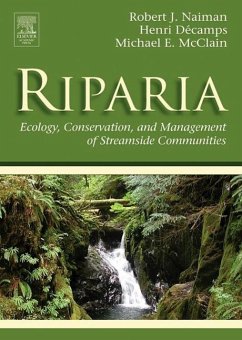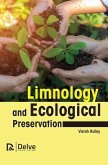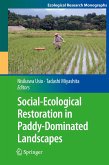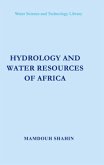This book describes the underlying water conditions and geologies that support viable riparia, illustrates the ecological characteristics of riparia, and discusses how riparia are used by human cultures as well as how riparia can be used to sustain environmental quality. In recent years riparian management has been widely implemented as a means of improving fisheries, water quality, and habitat for endangered species. This book provides the basic knowledge necessary to implement successful, long-term management and rehabilitation programs.
"...the most comprehensive synthesis of the riparian ecology literature...Though this could be used as a graduate-level or upper-division undergraduate textbook, researchers and practitioners will benefit from the book's holistic vision of riparia. All readers will appreciate the 56-page bibliography, reflecting the author's broad knowledge and international experience in watershed management, aquatic ecology, landscape ecology, and biogeochemistry. This book also demonstrates the maturation of landscape ecology and its integration into natural resource management in the years since Malanson's work...Highly recommended. Upper-level undergraduates and above." --CHOICE
"Riparia is 11 chapters, 430 pages, 137,825 words, and 990 references of pure, unadultured riparian system biology, ecology, hydrology, geomorphology, biogeochemistry, biophysics, and yes, socioenvironmental visions. To say that all things riparian are covered in this book is an understatement...Following Bob Paine's lead in espousing the ecological importance of keystone species, NDM work hard to convince us that riparia are the 'key stone elements of catchments'. In that, they succeed. They also don't let the reader miss the conclusion that riparia are highly heterogeneous, highly variable, highly diverse systems...Riparia is at its best when the subject of the interchange between rivers and their surrounding communities is tackled directly, and when the information being presented is absolutely riparia-specific...Riparia is presently the bible of riparian systems, and for that, the authors are owed our thanks...The merger responsible for Riparia was that of the collective wisdom of three authors...In their wisdom, and in this book, a river runs through it." --K.T. Killingbeck, University of Rhode Island, in LANDSCAPE ECOLOGY
"...an impressive synthesis of the international literature investigating the sceince and conservation of streamside zones...Suitable, even essential, for both academics and practitioners involved in river and riparian science and management, Riparia is also appropriate for advanced undergraduate and graduate students. The book's structure makes it ideal for use both as a course text and as a resource for scientists who study river ecosystems. Its content is organized by concept and process, not by sepcific riparian component...each chapter relates an interesting story about riparian processes relative to contemporary themes of ecosystem function, which should make the book appealing to a broad audience...The authors' capacity to summarize and integrate very different research subfileds accurately and insightfully is an extraordinary feature of this book. I highly recommend Riparia to all river and riparian scientists and to others interested in the topic, an emerging focus of ecology and natural resource management. This book is sure to become a classic." --Stewart B. Rood, Unviersity of Lethbridge, for BIOSCIENCE
"Perhaps more than most other ecosystems, understanding riparian systems requires the integration of diverse disciplines. Riparia accomplishes this integration nicely by using landscape ecology to overarch potentially separate themes. The book is logically organized. The authors, all prominent researchers of river and riparian ecosystems, devote early chapters to the physical template of riparian areas, with appropriate focus given to the ecological implications of hydrology and fluvial geomorpholohy...Riparia will be most useful as a text for graduate students, or as a reference volume for researchers and resource managers...This book is exceptionally illustrated with instructive, high-quality photographs and colorful figures." --Scott Tiegs, Swiss Federal Institute for Environmental Science and Technology, in Ecology
"Streamside communities are exceedingly important for the functioning of ecosystems and the providing of ecosystem services to people. With growing challenges of land-use, climate change, and expanding infrastructure, the publication of Riparia: Ecology, Conservation, and Management of Streamside Communities, is especially timely, and deserves to be widely read and applied." --Jeffrey A. McNeely, Chief Scientist, IUCN-The World Conservation Union
"This book is a welcome and valuable addition to the understanding and management of riparian systems throughout the world." --Gene E. Likens, Institute of Ecosystem Studies, from the Foreword
"Both researchers and managers will want to include Riparia in their library, and the text will be an excellent choice for a graduate seminar or upper-division undergraduate course....Long in the making, this book is well worth the wait." --Sandy DeBano, Oregon State University
"Riparia achieves a rare combination of an easily readable style with a great wealth of factual information. By explaining the linkage between the ecological and cultural elements of riparian management, Riparia provides land managers with an invaluable tool for dealing with complex people/ecosystem dynamics." --William Jackson, IUCN, The World Conservation Union
"This is a beautiful and easily read book - the drawings convey information in ways that words cannot, and the sidebars and tables are packed with information that draws the reader in and conveys reference information that readers will come back to time and again." --Margaret Palmer, University of Maryland
"Riparia is 11 chapters, 430 pages, 137,825 words, and 990 references of pure, unadultured riparian system biology, ecology, hydrology, geomorphology, biogeochemistry, biophysics, and yes, socioenvironmental visions. To say that all things riparian are covered in this book is an understatement...Following Bob Paine's lead in espousing the ecological importance of keystone species, NDM work hard to convince us that riparia are the 'key stone elements of catchments'. In that, they succeed. They also don't let the reader miss the conclusion that riparia are highly heterogeneous, highly variable, highly diverse systems...Riparia is at its best when the subject of the interchange between rivers and their surrounding communities is tackled directly, and when the information being presented is absolutely riparia-specific...Riparia is presently the bible of riparian systems, and for that, the authors are owed our thanks...The merger responsible for Riparia was that of the collective wisdom of three authors...In their wisdom, and in this book, a river runs through it." --K.T. Killingbeck, University of Rhode Island, in LANDSCAPE ECOLOGY
"...an impressive synthesis of the international literature investigating the sceince and conservation of streamside zones...Suitable, even essential, for both academics and practitioners involved in river and riparian science and management, Riparia is also appropriate for advanced undergraduate and graduate students. The book's structure makes it ideal for use both as a course text and as a resource for scientists who study river ecosystems. Its content is organized by concept and process, not by sepcific riparian component...each chapter relates an interesting story about riparian processes relative to contemporary themes of ecosystem function, which should make the book appealing to a broad audience...The authors' capacity to summarize and integrate very different research subfileds accurately and insightfully is an extraordinary feature of this book. I highly recommend Riparia to all river and riparian scientists and to others interested in the topic, an emerging focus of ecology and natural resource management. This book is sure to become a classic." --Stewart B. Rood, Unviersity of Lethbridge, for BIOSCIENCE
"Perhaps more than most other ecosystems, understanding riparian systems requires the integration of diverse disciplines. Riparia accomplishes this integration nicely by using landscape ecology to overarch potentially separate themes. The book is logically organized. The authors, all prominent researchers of river and riparian ecosystems, devote early chapters to the physical template of riparian areas, with appropriate focus given to the ecological implications of hydrology and fluvial geomorpholohy...Riparia will be most useful as a text for graduate students, or as a reference volume for researchers and resource managers...This book is exceptionally illustrated with instructive, high-quality photographs and colorful figures." --Scott Tiegs, Swiss Federal Institute for Environmental Science and Technology, in Ecology
"Streamside communities are exceedingly important for the functioning of ecosystems and the providing of ecosystem services to people. With growing challenges of land-use, climate change, and expanding infrastructure, the publication of Riparia: Ecology, Conservation, and Management of Streamside Communities, is especially timely, and deserves to be widely read and applied." --Jeffrey A. McNeely, Chief Scientist, IUCN-The World Conservation Union
"This book is a welcome and valuable addition to the understanding and management of riparian systems throughout the world." --Gene E. Likens, Institute of Ecosystem Studies, from the Foreword
"Both researchers and managers will want to include Riparia in their library, and the text will be an excellent choice for a graduate seminar or upper-division undergraduate course....Long in the making, this book is well worth the wait." --Sandy DeBano, Oregon State University
"Riparia achieves a rare combination of an easily readable style with a great wealth of factual information. By explaining the linkage between the ecological and cultural elements of riparian management, Riparia provides land managers with an invaluable tool for dealing with complex people/ecosystem dynamics." --William Jackson, IUCN, The World Conservation Union
"This is a beautiful and easily read book - the drawings convey information in ways that words cannot, and the sidebars and tables are packed with information that draws the reader in and conveys reference information that readers will come back to time and again." --Margaret Palmer, University of Maryland








